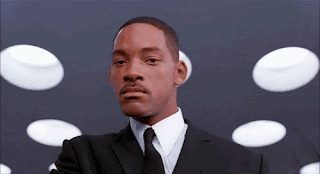Deconstruction, a reaction to structuralism, is based on the concept that you cannot know the intention of an author because words and media are all full of contradiction. There is meaning in the media used for expression, however media are constantly self-contradictory. Within this, things are not necessarily black and white. Its not about the binary necessarily, it is about the differences between. Philosopher Jacques Derrida says in Plato’s Pharmacy that “a text is not a text unless it hides from the first comer, from the first glance, the law of its composition and the rules of its game. A text remains, moreover, forever imperceptible” (1697). Within this there is the notion that text does not have blatant meaning, meaning is meant to be found deeper than the surface. The meaning is found when you break it down (hence the term deconstruction).

From here, I am going to introduce the cult classic “Dr. Horrible’s Sing- Along Blog”. Dr. Horrible (portrayed by Neil Patrick Harris) is an aspiring super villain who wants to be accepted by the Evil League of Evil, lead by Bad Horse the Thoroughbred of Sin (portrayed by a horse).
He is blatantly the villain, the supposed bad guy. The audience is trained to not like him. It is introduced early in act one that he has a love interest in Penny (portrayed by Felicia Day), the nerdy girl from the Laundromat.
From here on he is humanized in ways that villains are typically not meant to be seen. He has bad intentions for his career, but alarmingly sweet intentions for Penny.
It is also introduced that his arch nemesis, the hero, is the cocky Captain Hammer (portrayed by a hunky Nathan Fillion).
Captain Hammer has the physical archetype of a Disney prince and quickly has the attention of Penny. This, on paper, should be correct for the format.
The hero has the love interest, and the villain has nothing. However, (writer, director, creator) Joss Whedon’s vision for “Dr. Horrible’s Sing-Along Blog” was to break it down and reconstruct it. The audience does not side with Captain Hammer, they root for Dr. Horrible to get the girl.
The story should be the hero defeating the villain. However, Whedon deconstructs the format and makes it the villain losing the girl. In the final showdown in Act III, Dr. Horrible approaches Captain Hammer with his death ray (newly formed from the freeze ray).
Through some fumbling, Captain Hammer ends up with the death ray in his hands. In what appears to be the end, the gun is pointed directly at Dr. Horrible. As Captain Hammer pulls the fatal trigger, the gun appears faulty and ends up killing Penny.
As a result of her death, Captain Hammer ends up in therapy and is now pitied as the heartbroken hero. Dr. Horrible is accepted into the Evil League of Evil along with Bad Horse the Thoroughbred of Sin.
From here, the sympathetic audience may deduce that Dr. Horrible has achieved his goal of becoming accepted by the league. However, Whedon shows that there is more to the story by showing that Dr. Horrible got what he wanted as a result of the death of his beloved.
In the final lines of the final song, Dr. Horrible sings to the audience: “Now the nightmare’s real/Now Dr. Horrible’s here/To make you quake with fear/To make the whole world kneel/ (Everything you ever…) And I won’t feel/A thing”. The words simply say he is scary and he is control, but broken down he is hurt and fighting and is numb because of his loss.
Within the format of the movie, by picking apart the scenes and songs the meaning is found in the lyrics and the visuals.
Whedon presents the familiar story of the hero, the villain, and the girl. However, he deconstructs it and shows the audience there is so much more to the story with a simple flip of perspective (and songs!). The first watch of the movie provides entertainment, and the second watch provides insight.
Word Count: 673
Works Cited
Dr. Horrible's Sing Along Blog. Dir. Joss Whedon. By Joss Whedon, Maurissa Tancharoen, Jed Whedon, and Zach Whedon. Prod. David Burns and Michael Boretz. Perf. Neil Patrick Harris, Nathan Fillion, and Felicia Day. Dr. Horrible. Mutant Enemy Productions, 15 July 2008. Web. 19 Apr. 2011. <http://www.drhorrible.com/>.
Leitch, Vincent B. The Norton Anthology of Theory and Criticism. 2nd ed. New York: W. W. Norton &, 2010. Print.

























































